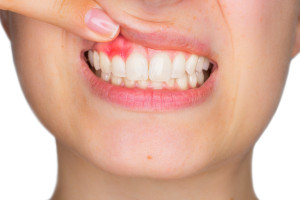 According to the Dental Research Journal, dental abscess was a poorly discussed topic of medical science until the late 1900s. Enter this millennium and it’s something dentists and dental patients know they can overcome.
According to the Dental Research Journal, dental abscess was a poorly discussed topic of medical science until the late 1900s. Enter this millennium and it’s something dentists and dental patients know they can overcome.
Know thy enemy—recognizing dental abscess
You’d think spotting an abscessed tooth would be a no-brainer. But since both gums and teeth can abscess, it takes some smarts to know what’s what.
Location, location, location
Generally, an abscessed tooth is one surrounded by a pocket of pus thanks to the presence of bacteria. Those pockets can occur at the root of the tooth (periapical) or in the gums next to the tooth (periodontal).
Bacterial buildup is normal, and regular brushing, flossing and cleanings should keep it all in check. When a tooth abscesses, it means the tooth has become unable to fight off the bacteria regardless of normal dental care. This makes the so-called pulp of the tooth (a chamber of chamber are blood vessels and nerves) vulnerable to a bacterial onslaught. For tooth abscesses, this infection can get all the way into the bone. In gum abscesses, the infection remains in the gum tissue.
Pain and more pain
At some point early on, your abscess is going to cause you pain. You may first notice localized swelling that you can feel with your tongue or finger and gets worse over a few days. In a gum abscess, your gums may bleed. In a tooth abscess, you will probably be sensitive to cold and hot foods and drinks. You know it’s bad when:
- You have a fever
- You stop drinking and eating
At any stage of pain, you should contact your dentist. If you have a fever and/or cannot eat or drink, you should visit your dentist immediately. And if a dentist is unavailable, consider a visit to the emergency room or an urgent care facility. An emergency room or urgent care visit is a must whenever you are experiencing difficulty with breathing or swallowing.
Treating dental abscess
Proper dental treatment of abscesses is not one-size-fits-all. In fact, it can be all hands on deck, where everything from penicillin to oral surgery. Which type of treatment one receives depends on how much the tooth infection has spread.
The surgery procedure can be basic or a little more than basic, also depending on the level of infection. Either way, infection has to be cleared before the tooth can be restored. A basic procedure involves opening the tooth to remove whatever is infected inside the pulp chamber. When things are really badly infected, the dentist can make an incision in the soft tissue so the pus can more easily drain. All this, and we haven’t even gotten to the root canal procedure yet.
Getting to the root of things
A root canal cleans out the pulp chamber and its canals then seals the space with a type of rubber material. If too much bone has decayed due to the infection, the tooth may need to be extracted.
For abscessed baby teeth, the conventional treatment is to eliminate the infection and any risk of future infection by extracting these temporary chompers. As for antibiotic usage in children with abscesses, your dentist will prescribe based on the extent of the infection.
For pregnant moms, any dental abscess requires immediate attention since mitigating infection is critical to the health of the fetus.
Overall, a prognosis of an abscess depends on how much infection has spread. Infections localized to the tooth and treatment is sought right away, a tooth typically is saved. If the infection has gotten into the jawbone, a tooth typically needs to say goodbye.







Leave a Reply